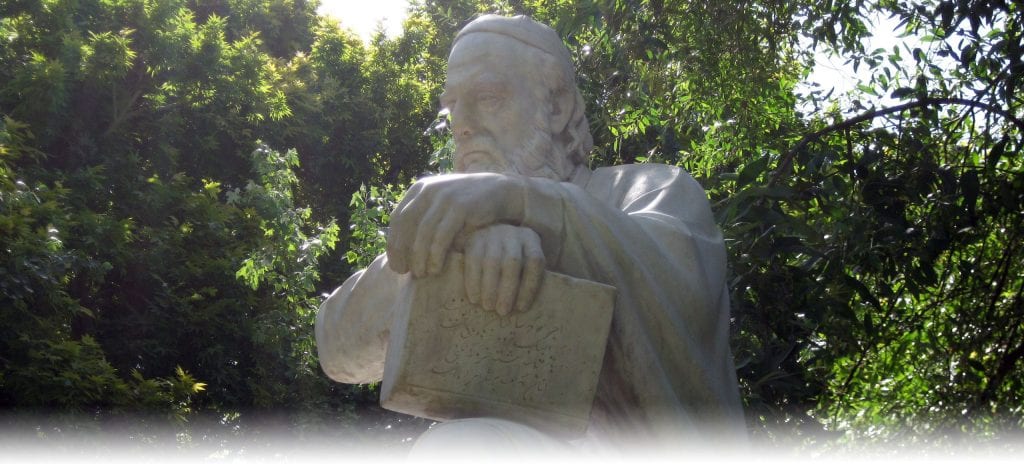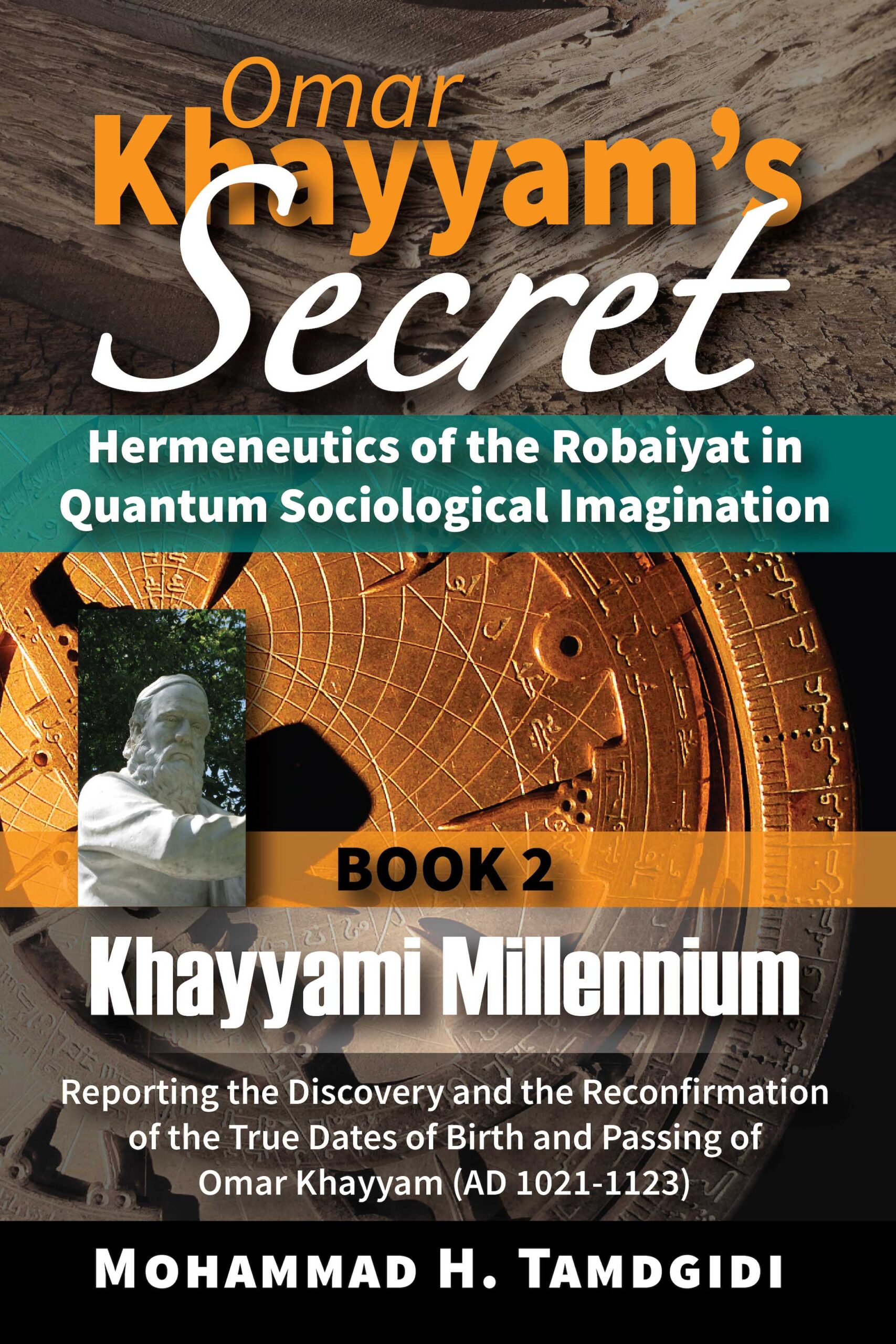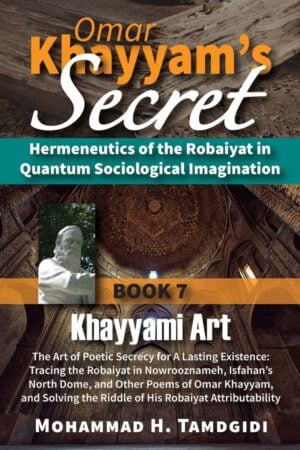Book Section: CHAPTER I — Contributions, Inconsistencies, and Inaccuracies of Swāmī Govinda Tīrtha’s Findings Regarding Omar Khayyam’s Dates of Birth and Passing — by Mohammad H. Tamdgidi
$20.00
This essay, titled “Contributions, Inconsistencies, and Inaccuracies of Swāmī Govinda Tīrtha’s Findings Regarding Omar Khayyam’s Dates of Birth and Passing,” is the first chapter of the second book of the twelve-book series Omar Khayyam’s Secret: Hermeneutics of the Robaiyat in Quantum Sociological Imagination, authored by Mohammad H. Tamdgidi. The second book is subtitled Khayyami Millennium: Reporting the Discovery and the Reconfirmation of the True Dates of Birth and Passing of Omar Khayyam (AD 1021-1123).
Description
Abstract
This essay, titled “Contributions, Inconsistencies, and Inaccuracies of Swāmī Govinda Tīrtha’s Findings Regarding Omar Khayyam’s Dates of Birth and Passing,” is the first chapter of the second book of the twelve-book series Omar Khayyam’s Secret: Hermeneutics of the Robaiyat in Quantum Sociological Imagination, authored by Mohammad H. Tamdgidi. The second book is subtitled Khayyami Millennium: Reporting the Discovery and the Reconfirmation of the True Dates of Birth and Passing of Omar Khayyam (AD 1021-1123).
As a part of his book The Nectar of Grace: Omar Khayyām’s Life and Works, published in 1941, the Indian scholar Swāmī Govinda Tīrtha tried to resolve longstanding doubts about Omar Khayyam’s dates of birth and passing, his approach and findings subsequently contributing in a significant way to the uneasy consensus held today in the world regarding those dates.
In his work, Tīrtha basically proposed that the solution to the problem of determining the date of birth of Omar Khayyam can be found in following up on the clues given in a horoscope for Khayyam’s birth that had been reported long ago in Zahireddin Abolhasan Beyhaqi’s Tatemmat Sewan el-Hekmat (Supplement to the Chest of Wisdom) (تتمه صوان الحكمة), a passage of which Tīrtha noted several scholars before him had taken notice but had not realized its significance for the purpose at hand (Tīrtha, p. XXXII). Based on Tīrtha’s calculations and considerations, Omar Khayyam’s dates of birth and death were “discovered” by him to be as follows: Birth date: 4:48 a.m., Wednesday, May 18, AD 1048. Date of demise: Thursday, Muharram 12th, 516 LH (in the years AD 1122/1123).
In the first section of this chapter, Tamdgidi offers an overview of how Tīrtha went about determining Omar Khayyam’s dates of birth and passing. His purpose therein is not yet to critique Tīrtha’s efforts. In the second section, however, the author explores both the internal consistencies and the factual accuracies of Swāmī Govinda Tīrtha’s solutions to the problems of determining Omar Khayyam’s dates of birth and passing. It is one thing to invalidate a claim based on external facts, and another to show that it is internally flawed, that is, it does not even fulfill the conditions it has itself set for its claim.
In offering his critique in this chapter, Tamdgidi assumes that Tīrtha’s reading of Beyhaqi’s reported horoscope is correct. In other words, he specifically takes for granted that Tīrtha’s reading that at the time of Khayyam’s birth the Sun and Mercury were on the Ascendant on the third degree of the Gemini for Neyshabour’s eastern horizon was correct. He then evaluates whether Tīrtha followed his own definitional requirements and procedural guidelines when using Khayyam’s reported horoscope for the purpose of determining Khayyam’s dates of birth and passing, and whether the data he himself provides support his conclusions. Tamdgidi also evaluates Tīrtha’s findings in terms of their external accuracy. By external accuracy he means to evaluate whether what Tīrtha claimed to be the astronomical data or calendrical uses supporting his findings were actually correct. He shows in the chapter that Swāmī Govinda Tīrtha’s findings have been for the most part both internally inconsistent as well as factually inaccurate.
Tamdgidi demonstrates in the chapter that there is absolutely no defensible grounds for considering Wednesday, May 18, AD 1048 to be Omar Khayyam’s birth date. For all practical purposes, Iran and the world are celebrating Khayyam’s date of birth on the wrong date. Tīrtha’s otherwise worthwhile effort passes neither the test of internal consistency nor that of external, factual accuracy of his own premises and procedures. Nor can we be sure that the exact year, let alone the month and day, of Khayyam’s passing as proposed by Tīrtha as prevalently accepted today are accurate.
In a following chapter, Tamdgidi relaxes the assumption of correctness of Tīrtha’s reading of the third degree of the Gemini in Khayyam’s reported horoscope, and further evaluate Tīrtha’s solutions for Khayyam’s dates of birth and passing.
Recommended Citation
Tamdgidi, Mohammad H. 2021. “CHAPTER I — Contributions, Inconsistencies, and Inaccuracies of Swāmī Govinda Tīrtha’s Findings Regarding Omar Khayyam’s Dates of Birth and Passing.” Pp. 27-62 in Omar Khayyam’s Secret: Hermeneutics of the Robaiyat in Quantum Sociological Imagination: Book 2: Khayyami Millennium: Reporting the Discovery and the Reconfirmation of the True Dates of Birth and Passing of Omar Khayyam (AD 1021-1123). (Human Architecture: Journal of the Sociology of Self-Knowledge: Vol. XV, 2021. Tayyebeh Series in East-West Research and Translation.) Belmont, MA: Okcir Press.
Where to Purchase Complete Book: The various editions of the volume of which this Book Section is a part can be ordered from the Okcir Store and all major online bookstores worldwide (such as Amazon, Barnes&Noble, Google Play, and others).
The Robaiyat of Omar Khayyam has also been referred to as “Rubaiyat of Omar Khayyam” (in Persianرباعيات حكيم عمر خيام نيشابوري) using an alternative transliteration from the Persian (or Arabic). Khayyam’s horoscope in Persian is referred to as طالع عمر خيام.






